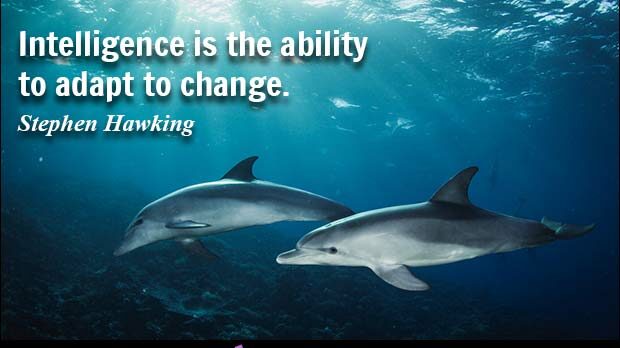Can you recall any life insurance company campaigns targeting consumers directly about the value and virtues of their core products? Have you ever seen these ads during the LPGA, The Masters, The World Cup or the World Series?
They could be promoting the value of income annuities in retirement, or the differences between permanent life insurance and term insurance? Each of those events reaches the necessary demographics for our industry. Imagine if Apple did not advertise directly to their customers? What if Ford didn’t advertise directly to buyers but GM and Toyota did, spending hundreds of millions of dollars targeted right at those consumers? The immediate impact on GM sales would be dramatic.
Imagine if these companies left the sole messaging responsibility to their local, privately owned distributors? They wouldn’t. It would be disastrous in every way. And yet, this is exactly what is happening with the life and annuity companies; almost without exception.
This is not about brand advertising. There is plenty of money being spent on branding ad campaigns while Suze Orman, Ken Fisher and Dave Ramsey have taken control of these conversations affecting our businesses.
Why are these companies not advertising and marketing their products to their policyholders? One explanation from some companies is that they do not sell directly to consumers and as a result, it is not their responsibility. Insurance companies rely on a variety of distribution methods to sell and reach their policyholders, mostly through a network of professional agents who specialize in the sale of these products.
Distribution in the automobile industry is similar. For example, as consumers, we are unable to purchase a BMW directly from the BMW company. Nor can we buy a Cadillac directly from GM. We buy from their middleman, their dealerships. The car companies support their distributors in many ways and one way is through direct to consumer advertising and marketing. The manufacturers advertise on a national level and their dealerships are targeting more locally in a coordinated partnership.
We have reached the point where our product manufacturers must seize this responsibility and begin to advertise, promote and market the products they manufacture, directly to insurance and annuity buyers. Over the past several years, there has been an obsession to “crack the code”, to find a way to jump start and create online consumer demand for life insurance and annuities. Unfortunately for all stakeholders, no magic bullet has been found. Life insurance is sold, not bought. But the insurance companies can help us create demand for these products. We are the industry’s “dealerships” and we simply cannot afford to shoulder this responsibility without their help.
The time is now for the industry to use its formidable resources and take control of these conversations. The carriers should begin inspirational campaigns that are dedicated to influence consumers to take action. This messaging requires complex, multi-media campaigns. I believe the ROI will be significant on many tangible and intangible levels, especially on new sales.
Without this change, calculated misinformation from our competitors will continue to influence consumers about our products. Consumers will lack the education based information to make informed decisions which negatively impacts sales. As the whole pie continues shrinking, so too will the overall slice for each distributor. We know this happens. The industry continues to lose agents every year and the remaining agents have reached an average age of 60. Sales are down or flat every year!
Currently, it is our competitors who define our products, our services and our professional status. They spend more, they message better and they communicate better with financial journalists. With all due respect to the few journalists who cover and do know the insurance and annuity space well, there are far too many others making incorrect and un-rebutted claims about our industry. I worry every time I see an article about life insurance and annuities written by journalists without the credentials to critique these products. Asking the distribution system to be solely responsible for pushing back against these misinformation campaigns is ineffective. By definition, we are easily dismissed for lacking objectivity and impartiality.
As these trends persist, crises of uninsured’s and under-insured’s have emerged into a national problem. I also suggest that there is a crisis of incorrectly insured’s, people who own the wrong coverage. There are millions of term insurance policyholders in their 50’s and 60’s who are near the end of the guaranteed term period, without good options. They didn’t convert and the conversion deadline passed meaning they cannot convert if they wanted to. For some, obtaining new coverage is filled with hurdles. Their health has changed and their budgets may not allow them to acquire what they now need.
How did they get here? Suzy Orman, Dave Ramsey and Art Williams told them to buy term and invest the difference. But nobody did. They bought term but didn’t invest the difference with any kind of discipline, if they did at all. Too many inexperienced insurance agents told people they would not need life insurance once their kids were grown and independent. Ask any person over 50 with kids and a spouse if they have no further need for life insurance today. There is plenty of pain and blame to go around but these consumers deserve good solutions going forward and we need to counsel the millennial generation about how to buy the right blend of affordable protection, for now, and permanent coverage for later. The cheapest term insurance product when they’re 35 is not the answer.
It is time for the entire compensation system to be reconsidered. Part of the reason for the widening gap of un-insured’s and under-insured’s in the middle market is because the commission is too low for sales in this market. As premiums drop and commission levels remain constant, the selling compensation is dropping in real terms.
To conclude with some good news, I am hearing more and more carrier interest about direct to consumer campaigns. Let’s hope this interest turns into real, meaningful dialogue about these issues, with all stakeholders.
I can be reached at Life Cycle Planners, Email or Facebook.

Also published on Medium.







